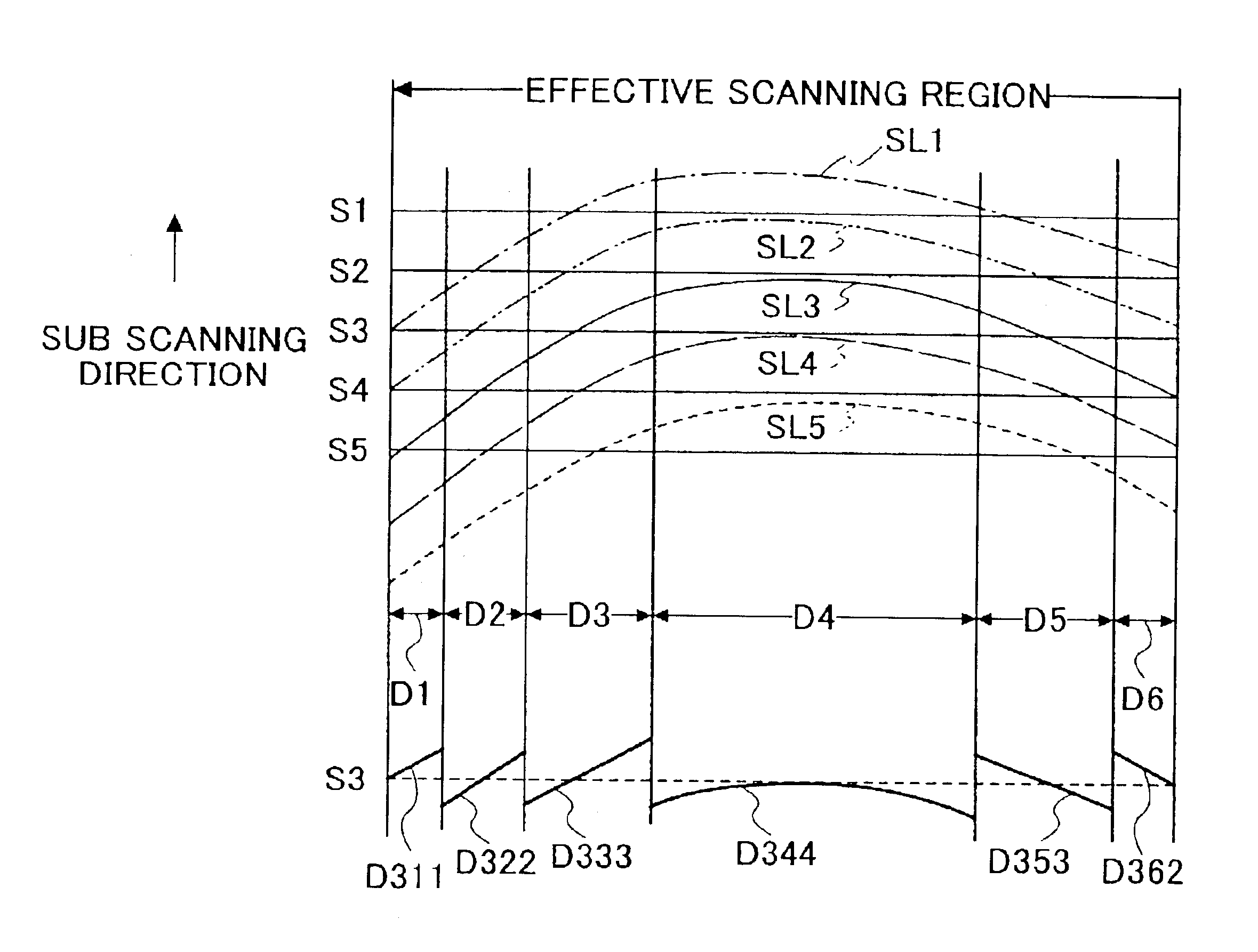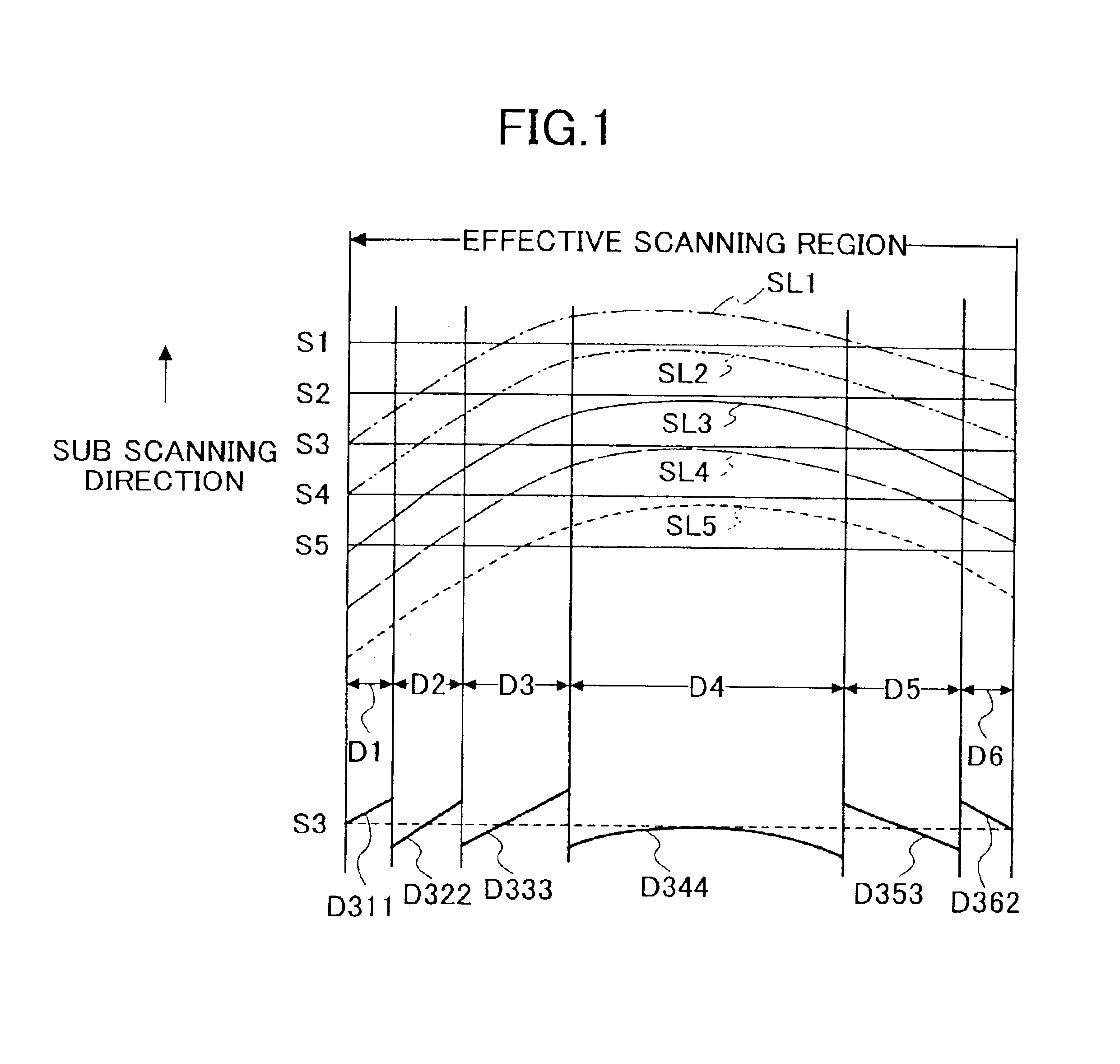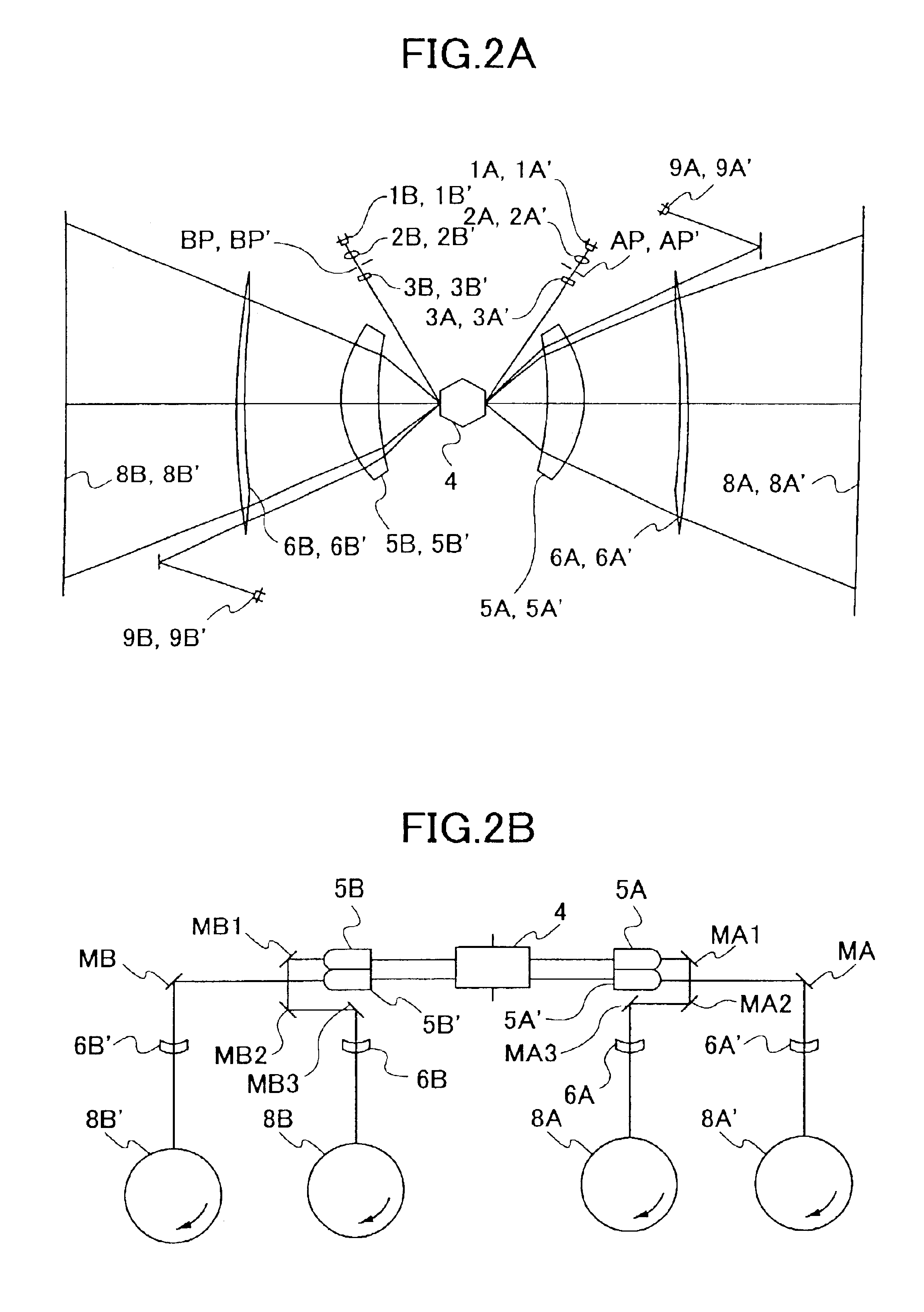Optical scanner and imaging apparatus using the same
a scanning machine and optical scanner technology, applied in the direction of electrographic process equipment, instruments, printing, etc., can solve the problems of unavoidable curving of scanning lines, difficult to realize perfect constant velocity characteristics of optical scanning, and curved scanning lines, so as to improve optical scanning, effective correction of scanning line curving, and good optical scanning
- Summary
- Abstract
- Description
- Claims
- Application Information
AI Technical Summary
Benefits of technology
Problems solved by technology
Method used
Image
Examples
first embodiment
[0064][First Embodiment]
[0065]FIG. 1 is a diagram for illustrating a divided writing method according to the present invention. According to the divided writing method, when one light spot performs optical scanning moving on a scanning surface, in each predetermined part of a scanning line, which is the trace of movement of the light spot, image data for the image line (corresponding to an ideal straight scanning line) closest to the predetermined part is written. That is, every time a light spot optically scans a scanning surface, image data for a plurality of image lines are selected. Thus, each of the image lines is partially written by each optical scan. Accordingly, the image data of each entire image line are written by a plurality of optical scans by the light spot. According to this method, image data for a plurality of image lines are divided and written during a single optical scan by a light spot. Further, image data forming one image line is written by a plurality of opt...
second embodiment
[0180][Second Embodiment]
[0181]A description will be given of a second embodiment of the present invention.
[0182]FIG. 10 is a diagram for illustrating an optical scanner according to the second embodiment of the present invention. FIG. 10 is similar in format to FIG. 1. In FIG. 10, reference numerals S1 through S5 denote five successive image lines as in FIG. 1. The difference between FIGS. 1 and 10 lies in that the five scanning lines SL1 through SL5 of FIG. 1 are drawn by as many optical scans successively performed by a single light spot while the four scanning lines SL1 through SL4 of FIG. 10 are simultaneously drawn by as many light spots. That is, according to the second embodiment of the present invention, the scanning surface is scanned line-sequentially by multi-beam scanning with four light spots. The scanning lines SL1 through SL4 have substantially the same scanning line curving characteristic.
[0183]That is, according to the optical scanner of the second embodiment of th...
third embodiment
[0189][Third Embodiment]
[0190]FIG. 11 is a diagram showing an imaging apparatus according to a third embodiment of the present invention.
[0191]The imaging apparatus of FIG. 11 forms a color image by employing photoconductive photosensitive bodies as photosensitive media. According to the imaging apparatus, component images of four colors of magenta, cyan, yellow, and black are formed to be superimposed on a sheet-like recording medium. Thereby, the color image is obtained.
[0192]The imaging apparatus includes polygon mirrors 151 and 152 having the same shape. The polygon mirrors 151 and 152 are fixed to a common shaft so as to rotate together with the shaft as a single unit. The polygon mirrors 151 and 152, together with a driving part (not shown in the drawing), form an optical deflection and scanning part.
[0193]The imaging apparatus further includes four light source devices, which are not graphically represented in FIG. 11. Light beams emitted from two of the light source devices ...
PUM
 Login to View More
Login to View More Abstract
Description
Claims
Application Information
 Login to View More
Login to View More - R&D
- Intellectual Property
- Life Sciences
- Materials
- Tech Scout
- Unparalleled Data Quality
- Higher Quality Content
- 60% Fewer Hallucinations
Browse by: Latest US Patents, China's latest patents, Technical Efficacy Thesaurus, Application Domain, Technology Topic, Popular Technical Reports.
© 2025 PatSnap. All rights reserved.Legal|Privacy policy|Modern Slavery Act Transparency Statement|Sitemap|About US| Contact US: help@patsnap.com



